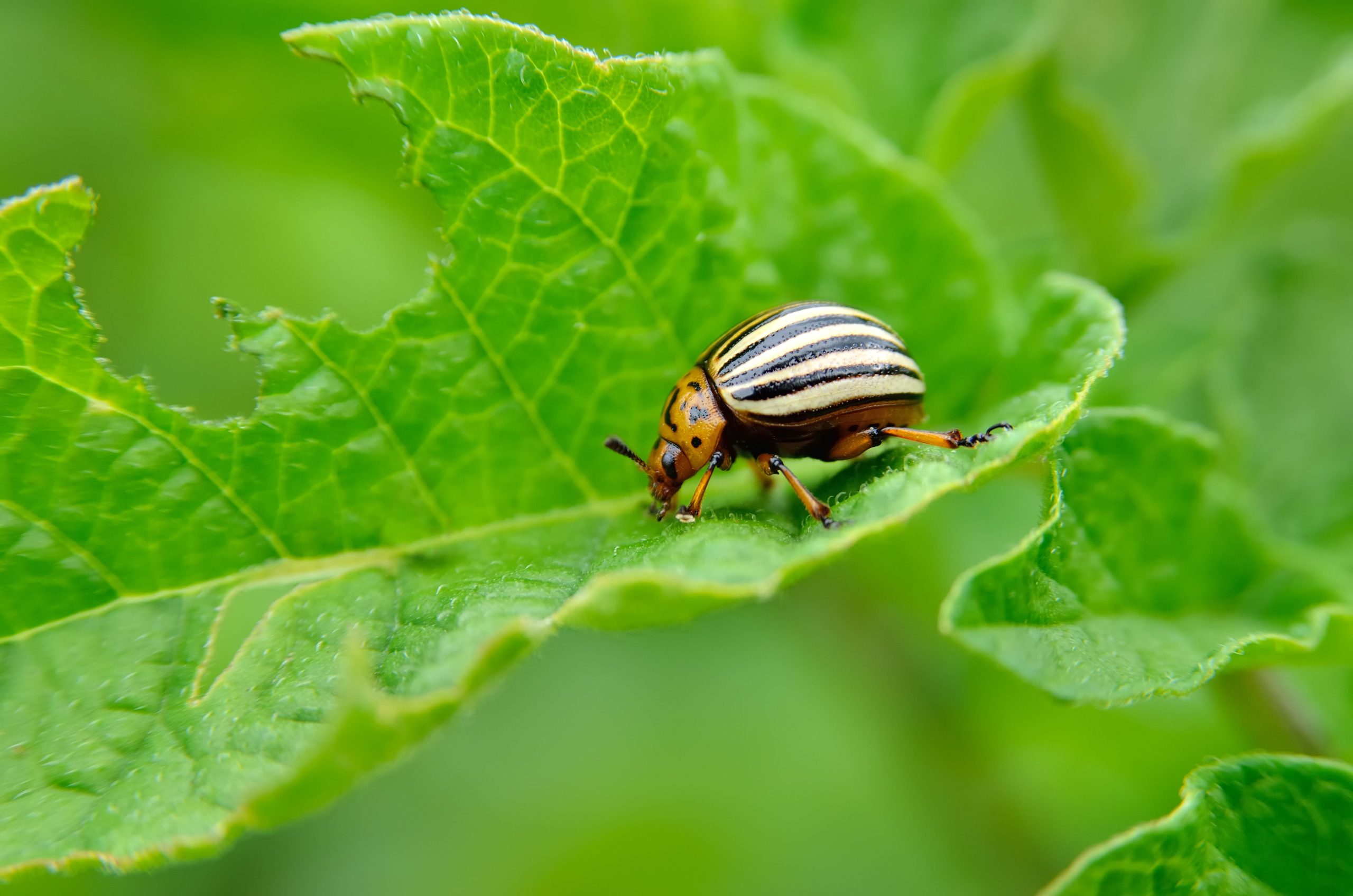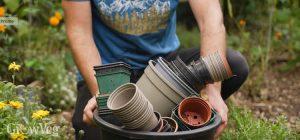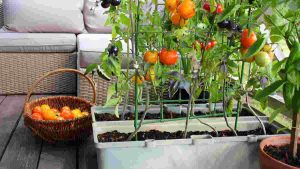Gardens can be a peaceful retreat. But pests often ruin that serenity.
These intruders can damage plants, spoil blooms, and frustrate gardeners. Understanding the threats lurking in your garden is crucial. Each pest has its own way of causing harm. Some chew leaves, while others suck sap, weakening plants. Identifying these troublemakers is the first step in safeguarding your green space.
This guide will explore ten common pests. You’ll learn how they harm your garden. Plus, we’ll share effective strategies to deal with them. Protecting your garden doesn’t have to be complicated. With the right knowledge, you can keep your plants healthy. Get ready to reclaim your garden’s beauty and tranquility from these pesky invaders.
Common Garden Pests
Garden pests can ruin your plants and hard work. From aphids to slugs, these ten pests are notorious for causing damage. Learn simple methods to get rid of them and protect your garden.Gardening brings immense joy, but common garden pests can quickly turn this joy into frustration. These unwelcome intruders not only damage your plants but can also disrupt the ecosystem of your garden. Knowing how to identify and manage these pests is crucial in maintaining a healthy garden environment.
Identifying Pest Types
Understanding the types of pests that invade your garden is the first step in combating them. There are insects like aphids and caterpillars, which chew on leaves and stems, leaving plants weak and vulnerable. Others, like slugs and snails, feast on the tender parts of young plants, often overnight. Each pest leaves distinct signs. Aphids, for example, often cluster on the underside of leaves, leaving a sticky residue. Caterpillars chew noticeable holes, while slugs leave slimy trails. Observing these signs helps you determine which pest is causing trouble and how to address it effectively.
Seasonal Pest Activity
Pest activity often peaks during specific seasons. In spring, when plants are tender and new growth is abundant, pests like aphids and caterpillars are particularly active. Summer heat brings out spider mites and whiteflies, which thrive in dry conditions. Your vigilance should shift with the seasons. In the fall, for instance, watch out for root maggots and grubs, which target the roots of your plants. Understanding these seasonal patterns allows you to anticipate problems and prepare solutions in advance. One summer, my tomatoes were ravaged by hornworms. I discovered them by their tell-tale leafless stems and droppings. Early detection allowed me to handpick them before the damage became irreversible. Have you noticed any seasonal patterns in your garden? Keeping track might just save your crops. Engaging with your garden regularly helps you spot these signs early. Take a stroll through your garden at different times of the day. This habit not only connects you with nature but also keeps you one step ahead of potential pest invasions.
Aphids
Aphids are tiny insects that harm plants by sucking sap from leaves, causing them to curl and wilt. They multiply quickly, making them difficult to control. Spray affected plants with soapy water to eliminate these pests effectively.Aphids are small, sap-sucking insects that can wreak havoc on your garden. These pests are often found in clusters on the underside of leaves, stems, or even flowers. Known for their rapid reproduction, a small aphid problem can quickly become a large infestation if not managed promptly.
Signs Of Infestation
Spotting an aphid infestation early can save your plants. Look for distorted, curled, or yellowing leaves. Sticky residue on leaves or nearby surfaces, known as honeydew, is a telltale sign of aphids. You might also notice an increase in ants, as they are attracted to the honeydew. Check your plants regularly to catch these signs before the damage becomes severe.
Natural Control Methods
One effective way to control aphids is by introducing beneficial insects like ladybugs or lacewings into your garden. These natural predators feast on aphids and can help keep their numbers in check. You can purchase them online or at garden centers. Another method is to make a homemade insecticidal soap. Mix a few drops of dish soap with water in a spray bottle and apply it directly onto the aphids. This simple solution can disrupt their cell membranes and kill them without harming your plants. If you prefer a more hands-on approach, consider spraying your plants with a strong stream of water. This can dislodge aphids from your plants and decrease their numbers effectively. Repeat this process every few days to maintain control. Have you ever noticed how a problem seems more manageable when you have a plan? Implementing these natural methods can give you peace of mind and healthier plants. Which method will you try first in your garden?
Slugs And Snails
When you step into your garden on a crisp morning, the last thing you want to see is the tell-tale signs of slugs and snails. These pests are the stealthy destroyers of your leafy greens, flowers, and even fruit trees. Their slimy trails might look harmless, but they can wreak havoc on your precious plants. Understanding their damage patterns and knowing how to prevent them can save you from frustration and ensure your garden thrives.
Damage Patterns
Slugs and snails are nocturnal feeders, often leaving behind a wake of destruction. You might notice irregular holes in the leaves of your plants, or even find entire seedlings missing.
These pests tend to favor tender foliage, making young plants especially vulnerable. They can strip a plant bare overnight, leaving nothing but stems.
Look for the silvery trails they leave behind as they move. These trails can help you identify their paths and find their hiding spots during the day.
Preventative Measures
You can take proactive steps to protect your garden from slugs and snails. Start by encouraging natural predators like birds and frogs. They love a slug or snail snack and can help keep the population down.
Consider setting up physical barriers. Copper tape around pots and raised beds can deter these pests because they dislike the sensation it causes.
Try using organic methods, such as sprinkling crushed eggshells or diatomaceous earth around plants. These materials create a rough surface that slugs and snails avoid.
Watering in the morning rather than at night can reduce the moisture slugs and snails love. Drier conditions make your garden less inviting to them.
Have you ever woken up to find your favorite plant devastated overnight? With these measures, you can reclaim control and protect your garden. What preventative measure will you try first?
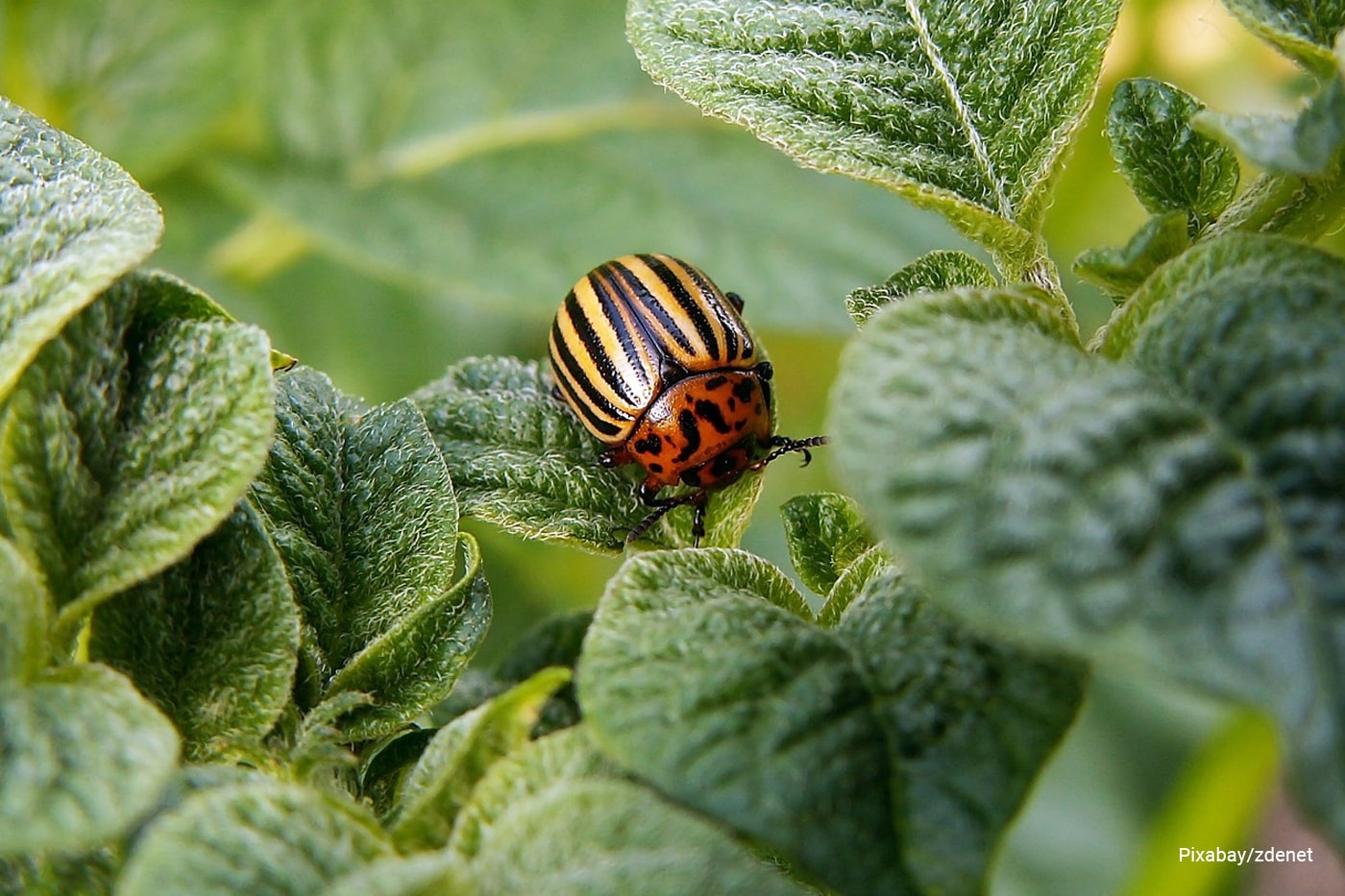
Credit: ecogardener.com
Spider Mites
Spider mites are tiny pests that cause damage by sucking sap from plant leaves, leading to discoloration and spots. Effective removal includes using insecticidal soap or introducing natural predators like ladybugs to control their population. Regular monitoring helps keep these destructive pests at bay in your garden.Spider mites are tiny pests that can wreak havoc on gardens. These minuscule arachnids often go unnoticed until they cause significant damage. They thrive in hot, dry conditions and feed on plant sap. This feeding process leaves plants looking unhealthy and discolored. Understanding how to detect and treat spider mites is crucial for maintaining a healthy garden.
Detection Techniques
Spotting spider mites early can save your plants. Check the undersides of leaves regularly. Use a magnifying glass to see these tiny pests more clearly. Look for fine webbing, a clear sign of their presence. Damaged leaves might appear yellow or stippled. Tap affected leaves over a white paper to see mites fall off.
Effective Treatments
Water pressure is a simple method to remove spider mites. Spray plants with a strong stream of water. This dislodges many mites from the foliage. Insecticidal soap is another effective treatment. Apply it directly on the affected areas. It suffocates the mites without harming plants. Neem oil is a natural alternative. It disrupts the life cycle of the mites. Use it consistently for best results.
Whiteflies
Whiteflies are tiny insects that damage plants by sucking sap, causing leaves to yellow and drop. Use insecticidal soap or neem oil to control them effectively. Regular monitoring and early intervention help keep infestations at bay.Whiteflies are tiny, winged insects that can wreak havoc on your garden. They congregate in large numbers on the undersides of leaves, sucking plant sap and leaving behind a sticky substance called honeydew. This not only weakens plants but also encourages the growth of sooty mold, which can block sunlight and hinder photosynthesis. If you’re battling these pests, understanding their lifecycle and how to combat them effectively is crucial.
Lifecycle Insights
Whiteflies go through several stages in their lifecycle, which can help you plan your attack. They start as eggs, hatch into nymphs, and then mature into adults. This entire process can take as little as three weeks, especially in warm weather. Catch them early at the egg or nymph stage to prevent a full-blown infestation. Regularly inspect the undersides of leaves for these stages. By interrupting their lifecycle, you can significantly reduce their population. Consider introducing natural predators like ladybugs or lacewings, which feed on whiteflies. This can be a sustainable and chemical-free way to manage their numbers.
Chemical Interventions
When natural methods aren’t enough, chemical solutions can offer relief. Insecticidal soaps and neem oil sprays can be effective against whiteflies without harming beneficial insects. These should be applied directly to the undersides of leaves where whiteflies reside. Select products specifically labeled for whitefly control for best results. Always follow the instructions carefully to avoid damaging your plants. Systemic insecticides are another option, particularly for severe infestations. These chemicals are absorbed by the plant, making it toxic to pests. Ensure that you use these sparingly and only when necessary to maintain a healthy garden ecosystem. Have you ever faced a whitefly invasion in your garden? Knowing when and how to use these interventions can make all the difference. Take action before they multiply and take over your garden paradise.
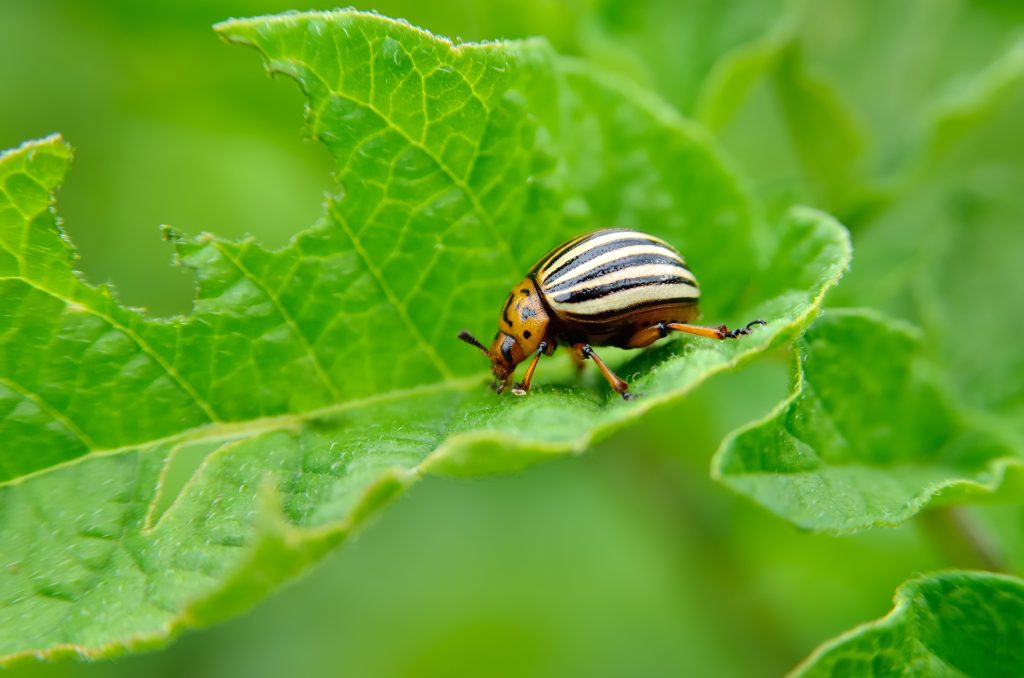
Credit: www.goodhousekeeping.com
Cabbage Worms
Cabbage worms are a gardener’s nightmare. They feast on leafy greens, leaving behind trails of destruction. These little green caterpillars come from white butterflies. They love cabbage, kale, and broccoli. Their munching can ruin crops quickly.
Identifying Damage
Damaged leaves show holes and edges eaten away. Cabbage worms leave dark green droppings on leaves. Check both sides of leaves for these signs. Early detection helps control infestation.
Companion Plant Solutions
Planting dill or rosemary can deter cabbage worms. These herbs confuse and repel pests. Nasturtiums attract cabbage worms away from crops. Use companion plants to naturally protect your garden.
Cutworms
Cutworms are a notorious enemy in gardens. They are night-feeding caterpillars that can devastate young plants. These pests chew through stems at the base. This often results in wilting or dead plants. Cutworms are especially fond of seedlings and new transplants. Understanding their behavior and how to manage them is crucial for healthy gardens.
Behavioral Traits
Cutworms hide during the day in soil or under debris. They come out at night to feed. These caterpillars are usually dull-colored. Brown, gray, or black are common shades. Cutworms curl into a C-shape when disturbed. This is a key identification trait. They can cut off plants at ground level. This makes early detection vital.
Soil Management Strategies
Maintaining clean soil is essential. Remove plant debris regularly. This reduces hiding spots for cutworms. Tilling the soil before planting can expose them. Birds and other predators can then eat these pests. Use protective collars around plant stems. This prevents cutworms from reaching your plants. Consider adding beneficial nematodes to the soil. They target cutworm larvae, reducing their population.
Japanese Beetles
Japanese Beetles are a common headache for gardeners. These shiny, metallic green insects are a nightmare for flowers and vegetables. Their presence can quickly turn a thriving garden into a distressed patch.
Feeding Habits
Japanese Beetles are voracious eaters. They target leaves, flowers, and fruit. They feed in large groups, stripping plants of their foliage. This feeding causes skeleton-like damage to leaves. Damaged plants struggle to photosynthesize. Flowers lose their vibrancy and appeal. The beetles prefer roses, grapes, and fruit trees.
Trapping Techniques
Traps can help manage Japanese Beetle populations. Use pheromone traps to lure beetles away. Place traps near affected plants. Ensure traps are positioned downwind from gardens. This prevents attracting more beetles to plants. Check traps regularly and dispose of captured beetles. Proper placement is crucial for effectiveness. Avoid placing traps too close to plants.
Garden Ants
Garden ants can be a nuisance for many gardeners. These tiny creatures often invade outdoor spaces, disrupting soil and plant roots. They are drawn to moisture and food sources, which may lead them to your garden. While ants play a role in the ecosystem, their presence can sometimes lead to larger pest issues. Understanding their behavior is key to managing them effectively.
Colony Characteristics
Garden ants live in structured colonies. Each colony has a queen, workers, and sometimes males. The queen is responsible for reproduction, laying thousands of eggs. Workers forage for food, care for the young, and maintain the nest. Colonies can grow quite large, with thousands of ants. They often build nests in soil, beneath rocks, or inside rotting wood. Their presence can disturb plant roots, leading to weakened growth.
Barrier Methods
Barriers can help prevent ants from entering your garden. Use natural deterrents like diatomaceous earth around plant bases. This powder is sharp to ants, deterring them from crossing. Create physical barriers using copper tape or sticky traps. These methods can block ants from accessing areas they frequent. Ensure barriers are checked regularly and replaced if needed. This ensures continued effectiveness in keeping ants at bay.
Integrated Pest Management
Integrated Pest Management (IPM) offers practical solutions for managing 10 garden pests. It combines natural methods and targeted treatments to protect plants. IPM balances pest control with environmental health, ensuring garden productivity without harmful chemicals.Integrated Pest Management (IPM) offers a balanced approach to pest control. It combines various strategies to manage pests effectively. This method reduces reliance on harmful chemicals and minimizes environmental impact. By using a mix of techniques, IPM creates a resilient garden ecosystem. It helps maintain healthy plants and keeps destructive pests at bay. Let’s explore some key components of IPM.
Combining Control Options
IPM encourages combining different pest control methods. This approach targets pests at various stages of their life cycle. Use biological controls like beneficial insects or nematodes. They naturally reduce pest populations. Pair these with cultural practices such as crop rotation and proper sanitation. These methods disrupt pest habitats and breeding grounds. Mechanical controls like traps or barriers can also play a role. They physically prevent pests from accessing plants. Each method complements the other, ensuring comprehensive pest control.
Sustainable Practices
Sustainable practices form the backbone of Integrated Pest Management. Encouraging biodiversity in the garden supports IPM goals. Diverse plant species attract natural predators of garden pests. This creates a self-regulating ecosystem. Regular monitoring and record-keeping help identify pest trends. This information guides timely interventions before pests cause significant damage. Organic mulches and compost enhance soil health. Healthy soil supports robust plant growth, making plants less vulnerable to pests. Sustainable practices promote long-term garden health and pest resistance.

Credit: planetprinceton.com
Frequently Asked Questions
What Is The Most Common Pest In The Garden?
Aphids are the most common garden pests. They suck sap from plants, causing weakened growth and yellowing leaves. Regular inspection and organic solutions help control their population. Ladybugs and neem oil are effective treatments. Keeping plants healthy also reduces aphid infestations.
What Is The Most Destructive Pest?
The most destructive pest is the desert locust. It causes significant damage to crops and vegetation. Swarms can consume vast amounts of plants, leading to food shortages. These pests are highly mobile, making control efforts challenging. Effective management requires timely monitoring and intervention to prevent widespread agricultural losses.
What Is The Hardest Plant Pest To Get Rid Of?
The hardest plant pest to eliminate is the root-knot nematode. These microscopic worms invade plant roots, causing significant damage. They are difficult to detect and control, leading to persistent infestations. Effective management requires a combination of crop rotation, resistant plant varieties, and soil health improvement strategies.
What Is The Best Treatment For Garden Pests?
Use natural predators like ladybugs to control garden pests. Apply neem oil or insecticidal soap for organic treatment. Regularly inspect plants and remove affected leaves. Rotate crops to prevent pest buildup. Maintain healthy soil and proper plant spacing to reduce pest infestation.
Conclusion
Garden pests can harm plants and ruin your hard work. Identifying these pests is crucial for effective control. Some bugs, like aphids, are tiny but mighty in destruction. Others, like slugs, are slow but relentless. Natural methods often work best.
Consider using neem oil or diatomaceous earth. These are safer for the environment and your plants. Regular garden checks help catch problems early. Stay vigilant and proactive. Your garden thrives when pests are managed well. With patience and care, you can enjoy a healthy, vibrant garden.
Happy gardening!

